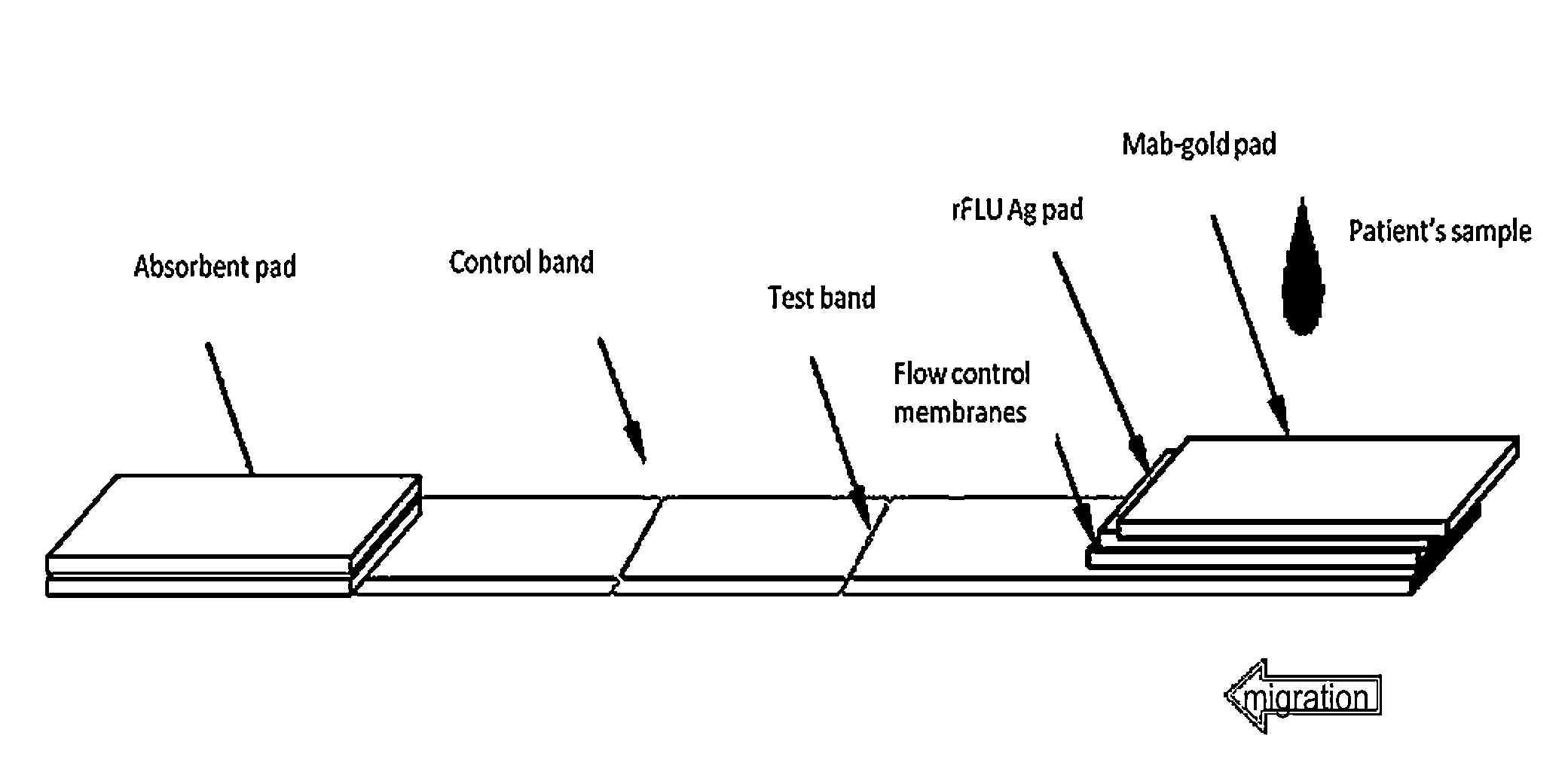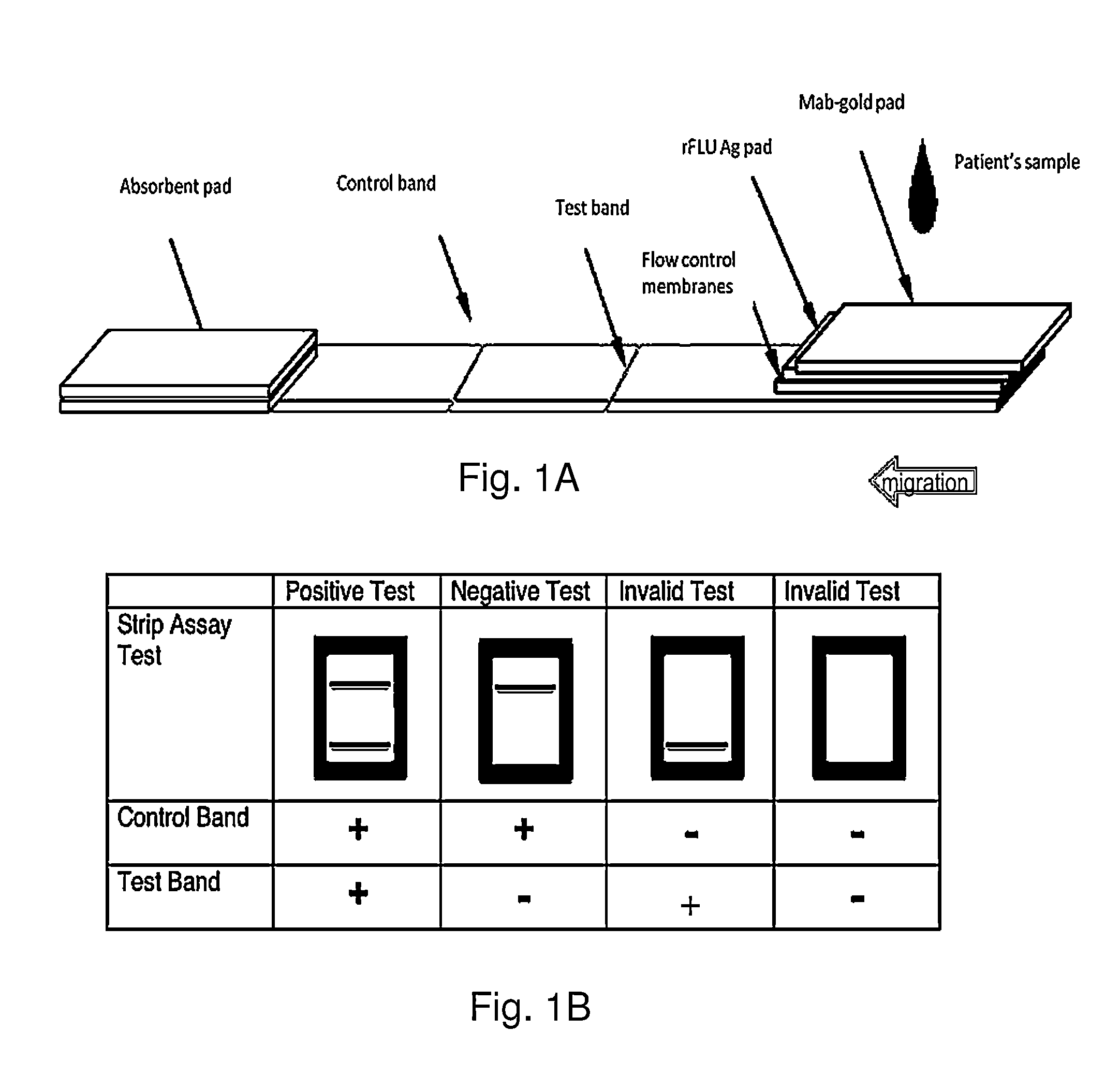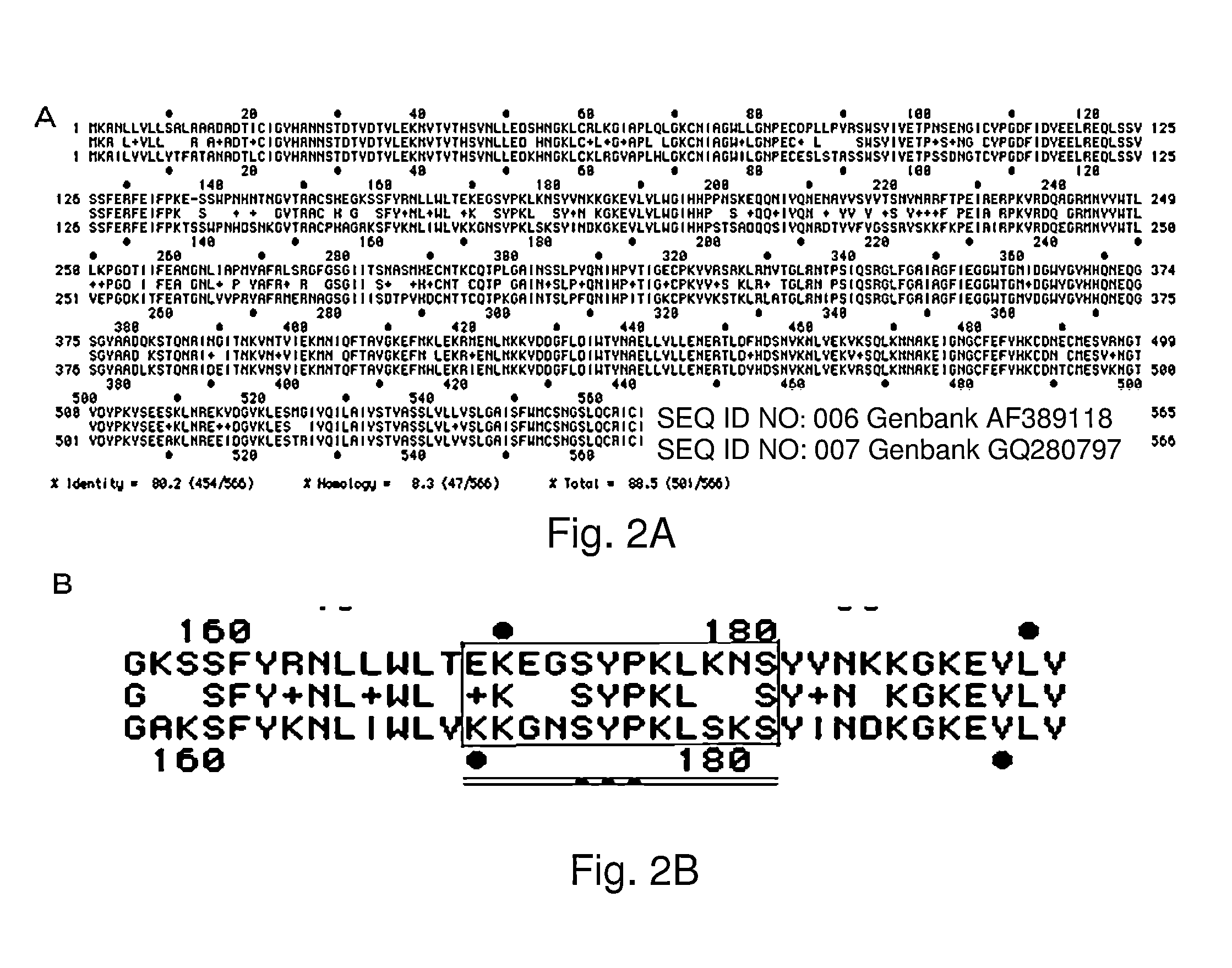Compositions and methods for determining successful immunization by one or more vaccines
a technology of vaccines and compositions, applied in the field of diagnostic methods and kits, can solve the problems of inaccessible, inability to determine if the immunization criteria are met, and the potential for severe morbidity and mortality will be substantially higher
- Summary
- Abstract
- Description
- Claims
- Application Information
AI Technical Summary
Benefits of technology
Problems solved by technology
Method used
Image
Examples
example 1
7.1. Example 1
An Immunochromatographic Strip Assay for IgM Capable for Determination of Successful Vaccination
[0059]Patients will demonstrate an early antibody response of the IgM type during the first 4 days post vaccine immunization or illness, and nearly all patients will have detectable IgM antibodies by 7 to 8 days thereafter. Influenza-specific serum IgG is detectable by 3 weeks postinfection / inoculation. The virus itself is usually no longer detectable by the time influenza-specific serum IgM appears, although both IgM and IgG may persist for more than a year.
[0060]Both the ELISA and the strip format assay can use the same principle and the same antigens. A solid-phase immunochromatographic strip technology to qualitatively detect the presence of antibodies in human serum or plasma has been devised (Shaikh et al., Development of a novel, rapid, and sensitive immunochromatographic strip assay specific for West Nile Virus (WNV) IgM and testing of its diagnostic accuracy in pati...
example 2
7.2. Example 2
Selection of One or More Antigenic Epitope Peptides for Influenza H1N1 Hemagglutinin Vaccination Tests
[0063]Antigens used for determining successful immunization are the antigens of a vaccine for which the test is specifically designed to assess. Thus, if a vaccine used a particular hemagglutinin, such as that of Genbank Accession number GQ280797, then the same hemaggutinin can be used to test for vaccination. If more than one vaccine is to be tested for within a single patient, specific areas of the antigen must be selected. The comparison of antigens that are present in different vaccines is based upon knowledge of the current vaccine compositions for which testing is desired. Antigen epitope peptides are selected based upon known antigenic sights, such as Sa, Sb, Ca, and Cb, based on epitope mapping. Prior epitope maps may be used, such as that described by Xu et al., 2010 (Structural basis of preexisting immunity to the 2009 H1N1 pandemic influenza, Science 328: 35...
example 3
7.3. Example 3
Construction of Peptides for IgG Immunochromatographic Strip Assays
[0064]In order to modify the immunochomatographic strip assay to accommodate IgG, the epitope peptides must be tagged with an epitope tag in order to be recognized by a gold-conjugated detector antibody that is not recognized by an anti-human IgG biotinylated capture antibody. The test herein uses one or more specific fragments of recombinant influenza antigens (signature epitopes, such as those from Table 1, also described in the Example above) that are expressed as a fusion protein with specific antibody tags (e.g., epitope tags such as FLAG (DYKDDDDK) [SEQ ID NO: 003] or myc (EQKLISEEDL) [SEQ ID NO: 004] Jarvik and Telmer, 1998, Epitope tagging, Annual Review of Genetics, 32: 601-618), in one or more expression systems, such as a bacterium (Merten et al., (eds) 2001, Recombinant protein production with prokaryotic and eukaryotic cells; A comparative view on host physiology, Kluwer Academic Publishers...
PUM
 Login to View More
Login to View More Abstract
Description
Claims
Application Information
 Login to View More
Login to View More - R&D
- Intellectual Property
- Life Sciences
- Materials
- Tech Scout
- Unparalleled Data Quality
- Higher Quality Content
- 60% Fewer Hallucinations
Browse by: Latest US Patents, China's latest patents, Technical Efficacy Thesaurus, Application Domain, Technology Topic, Popular Technical Reports.
© 2025 PatSnap. All rights reserved.Legal|Privacy policy|Modern Slavery Act Transparency Statement|Sitemap|About US| Contact US: help@patsnap.com



